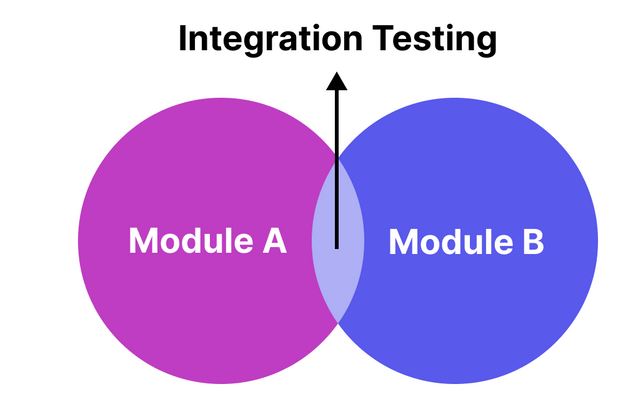Integration testing is the phase in the software testing process that follows unit testing and precedes system testing. Integration testing entails the examination of the collective applications, modules, or components to verify their proper functioning when operating together.
The primary aim of integration testing is to assess the interfaces between these entities and detect any potential flaws or problems that could emerge during their communication.
Types of Integration Testing:
Incremental Testing:
Incremental testing involves logically combining and testing two or more modules. This approach allows for step-by-step examination of integrated applications, enabling early defect detection. Incremental testing can further be classified into the following subtypes:
- Bottom-Up Testing:
This type of testing starts from the lowest-level module in the architecture, with the control flowing towards the top. It enables early bug fixing and minimizes identification and troubleshooting time.
- Top-Down Testing:
In top-down testing, the testing process begins with the top module, and the control flows towards the bottom. It allows for a systematic evaluation of the integration hierarchy.
Sandwich Testing:
Also known as a hybrid integration testing approach, sandwich testing combines both top-down and bottom-up approaches. It involves testing in both upward and downward directions, starting from the middle layer of the integration process. The sandwich approach brings together the advantages of both top-down and bottom-up approaches, enabling expedited testing of module interfaces. Nonetheless, this method can be intricate and may not be suitable for every software application.
Big Bang Testing:
Big Bang testing is a non-incremental approach where all the modules are integrated into a complete system, and testing is performed as one unit. This type of testing is ideal for smaller systems.
Benefits of Integration Testing:
Integration testing provides several key benefits, including:
1. Ensuring Correct Functionality:
Integration testing verifies that integrated applications or modules work correctly as expected, ensuring the overall functionality of the software system.
2. Validating Data Transfer:
Integration testing ensures that data transferred between modules and APIs is accurate and reliable.
3. Seamless Interaction with Third-Party Tools:
Integration testing verifies that the application interacts seamlessly with third-party tools and various APIs, ensuring smooth integration.
4. Identifying Issues:
Integration testing helps identify issues such as broken database schema and cache integration errors, allowing for early detection and resolution.
5. Reducing Probability of Failure:
By thoroughly testing the integration of different components, integration testing reduces the probability of total software failure, enhancing the system’s reliability.
6. Checking Structural Changes:
Integration testing enables the examination of structural changes as users move from one module to another, ensuring a smooth transition and user experience.
Conclusion
When it comes to testing the integration points of your applications and managing business risks effectively, choosing the right platform is crucial. That’s where Opkey comes in. Opkey is the comprehensive platform you need for effective testing and risk management. With support for various technology stacks, including app, desktop, API, web, legacy, and mobile, Opkey simplifies the validation of critical integration points across your entire application ecosystem.
By using Opkey, you can consolidate your testing efforts and eliminate the need for multiple platforms. This streamlined approach saves time and reduces costs for your enterprise, providing a unified solution that simplifies your testing process. Opkey’s standout feature is its automation of impacted test scripts. It autonomously identifies and fixes affected scripts, alleviating the manual burden of test maintenance and ensuring an efficient testing process with minimal intervention.
Thanks for reading the article. You can read more informative blog here TECH NEW UK


